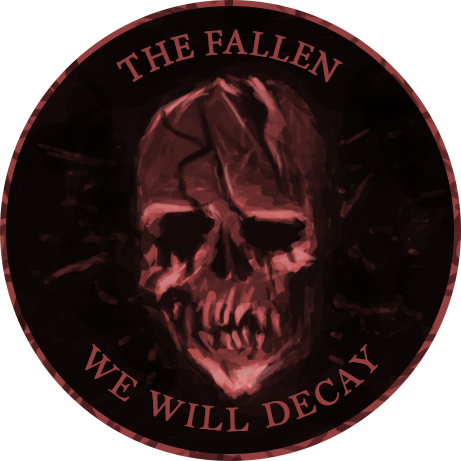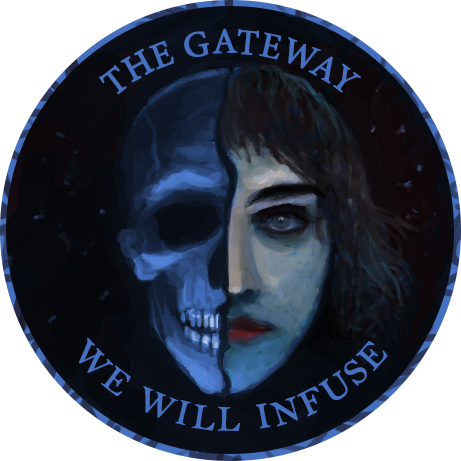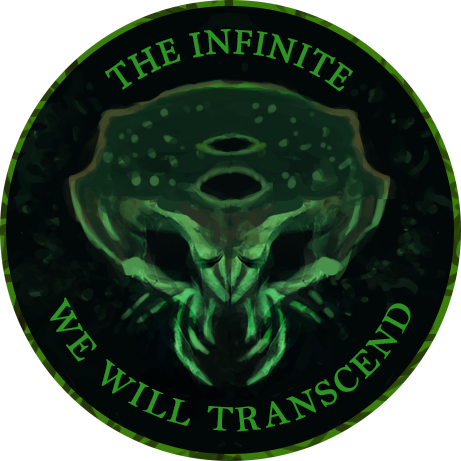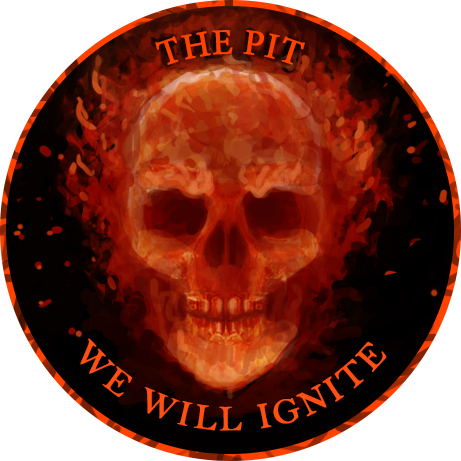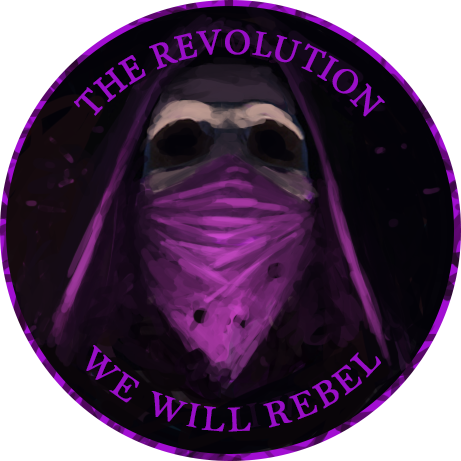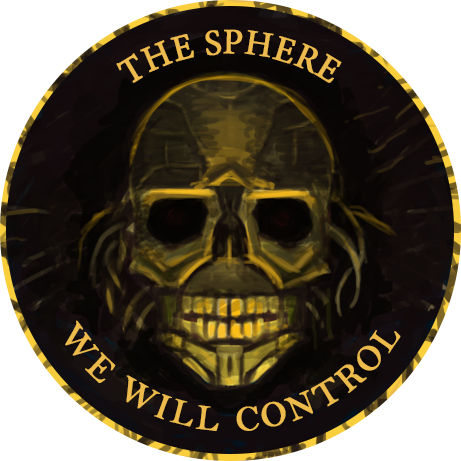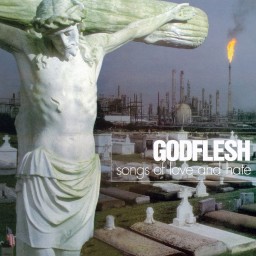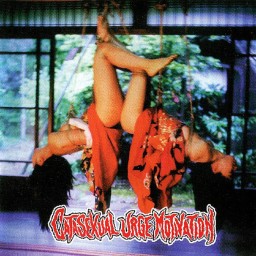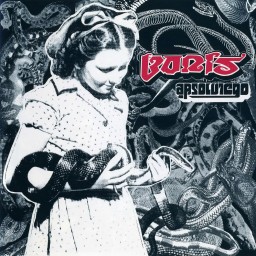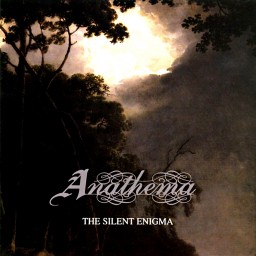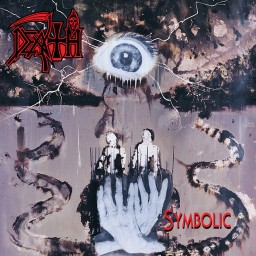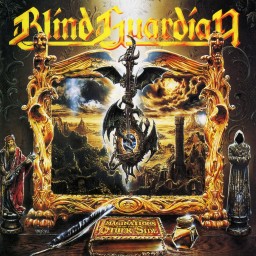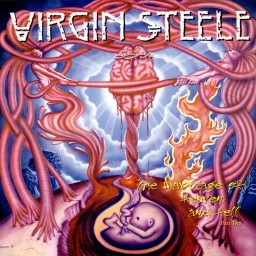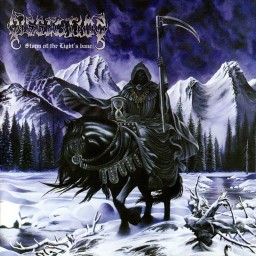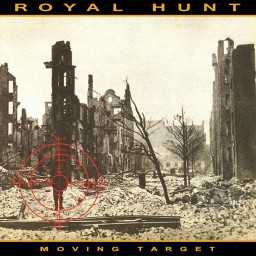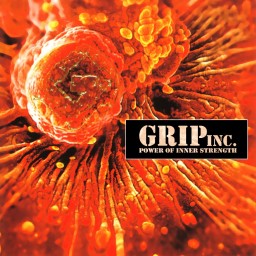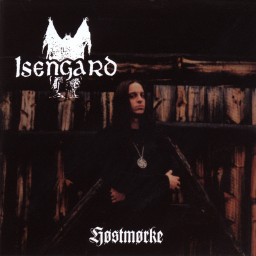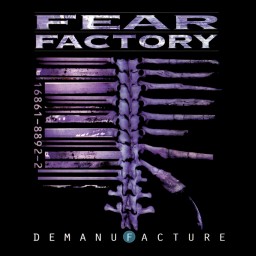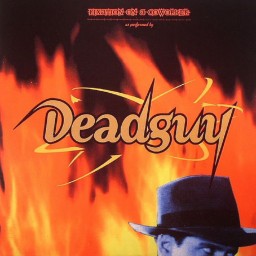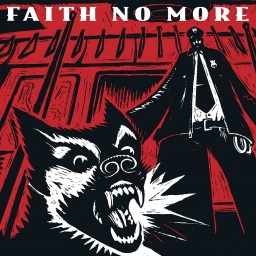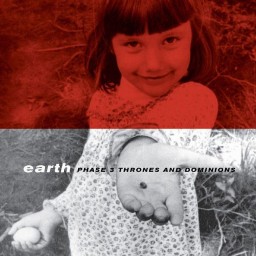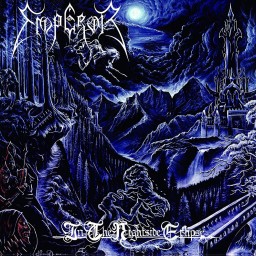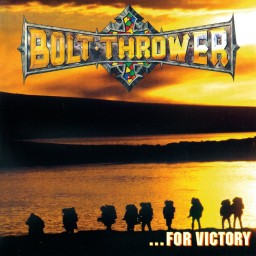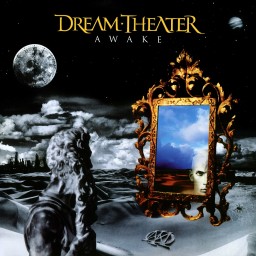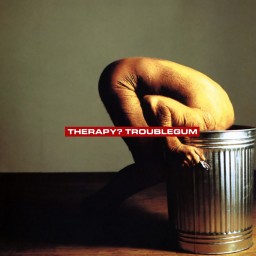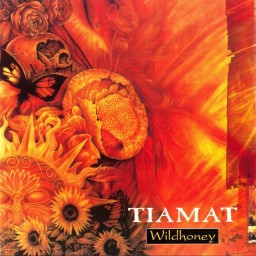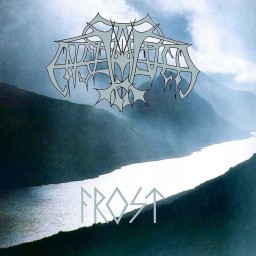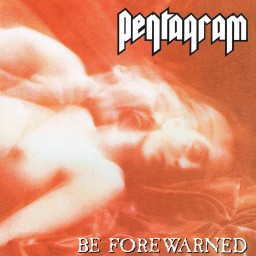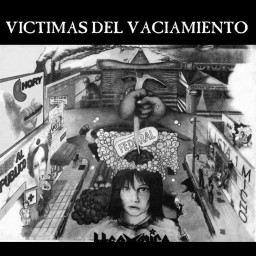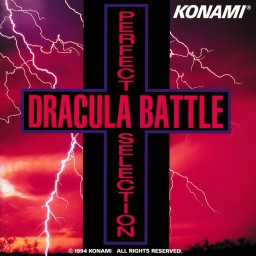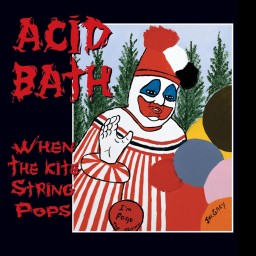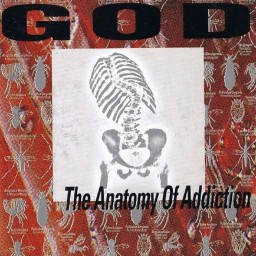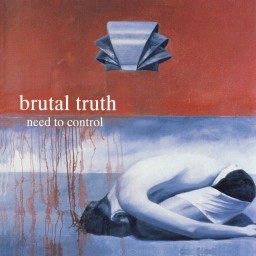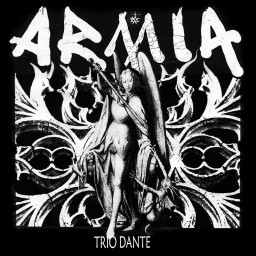SilentScream213's Reviews
Stoner Metal remains one of the least compelling Metal subgenres to me. The slower stuff lacks the emotion and atmosphere of Doom, for example, while the more energetic takes can’t match the riffs of tried-and-true Heavy Metal. And far too often, it just sounds like Hard Rock/Grunge with just a bit of extra heaviness. The vocals are uncompelling, though not nearly as much as the lyrics, and the instrumentation ranges from boring to serviceable.
Corrosion of Conformity fall into the statement I’d have to make “good, for a Stoner band.” They’ve got good energy and decent riffs… for a Stoner band. Wiseblood is pretty by the numbers for them. A large number of tracks that could easily be found on a Grunge album or heard on Classic Rock radio and no one would think anything of it. Every track good enough, but never standing out or packing anything memorable.
I guess the demographic is… people driving trucks, lifting weights, or getting turnt on the substance of the day. Not me.
Genres: Heavy Metal Stoner Metal
Format: Album
Year: 1996
This may be a bit brash, but I expected a lauded album made by a once nazi, church burning murderer to be a bit more exciting.
I wasn’t a big fan of Burzum’s other albums, but some tracks sat very well with me, and I could see the evolution of the heavily Ambient/Dungeon Synth-leaning Atmoblack developing. The problem was, the styles weren’t being mixed very well, we’d more so get one and then the other. I was expecting Filosofem – considered Burzum’s masterpiece and one of the greatest Atmospheric Black Metal albums of all time – to finally nail that style he’d been developing.
Aaaand no, he drops the ball for me. The tracks are incredibly boring and repetitive, no riffs to speak of, the guitar fuzz being so abrasive and poorly mixed that actual notes are mostly indiscernible. The ambient part has barely been incorporated into the music, with minimal, repetitive synthed notes playing a very minor background role. Once again, the only track that fully incorporates Ambient is devoid of any Metal at all, making this another failure to truly integrate both styles full and well into a single song.
The vocals, are atrocious, in fact the mixing on every front is so bad that nothing really sounds good, and this coming from someone who can enjoy artists like Bathory with no issue. This is considered depressive, melancholic, music… doesn’t really sound that way to me, it’s mostly just droning on and on without evoking much at all.
However, that’s not to say it’s truly a bad album, it’s just immensely disappointing. The compositions are decent, and the Ambient melodies that can be heard are quite nice. The repetitiveness is not so much an issue and does work well with the atmospheric soundscapes created. It’s decent background music if the horrible production isn’t enough to ruin the experience. But that’s where my compliments end.
Genres: Black Metal
Format: Album
Year: 1996
Godflesh remains one of those bands I just don’t “get.” Each song is more or less one rhythmic pattern repeated nonstop and a handful of boring, repetitive riffs. Back on their debut, at least this style was novel, though I liked it no more then than I do now. By Songs of Love and Hate, there were already a few other Industrial Metal bands offering a lot more than Godflesh, and I still fail to see the acclaim given here. Honestly, I actually dug this more on the first listen, not paying too much attention to it and enjoying the rhythmic aggression. Unfortunately, more focused listened revealed just how boring it is, with almost no memorable moments whatsoever.
That aside, there is one accolade I will give this album. The track Frail is legitimately good musically, it sounds quite different from the rest, with a bit more energy, melody and emotion.
I would love to see them explore more sounds like on their Cold World EP, or like the track Frail here, but alas…
Genres: Industrial Metal
Format: Album
Year: 1996
You can get an idea for what this album is about based on the name and album cover. Well, probably, I don’t actually know – the lyrics are impossible to find and entirely indiscernible, but the track titles all check out. The electronic drums give this thing a unique flavor (for its time) and the guitars are actually pretty slow and groovy despite the blast beating drums.
This release is definitely influenced by the Japanese Ero Guro Nansensu movement (erotic grotesque nonsense), which is a really interesting artistic phenomenon that was about exactly as it says. It started back in the first half of the 20th century and for some reason has endured in Japanese art and pop culture up to the modern day (that’s why you see so much gratuitous violence in even mainstream anime). You can bet when Japan caught wind of goregrind and pornogrind, this immediately fit the bill, and was taken to more bizarre extremes with innovative bands like this one pushing the genre further.
Other than all that though, it’s not that great of an album. The vocals are horrible, and the guitars are quite mundane. It’s more fun for the novelty of it. It’s not Cybergrind in itself either, but likely had an influence on the development of the genre, especially seeing as this was easily the biggest Grindcore album to come from Asia at the time.
Genres: Grindcore
Format: Album
Year: 1996
Boris is actually one of the most notable Metal bands to come out of Japan, and one of the biggest names in Drone Metal overall. Their debut is, maybe unsurprisingly for a still rather new and unexplored genre, underwhelming. The single hour-long track is just guitar fuzz and feedback for the majority of it. Nothing resembling riffs or even rhythms – really, it’s just feedback noise (in my opinion, this doesn’t qualify as Metal, but, that’s neither here nor there). There is a midsection where drumming and vocals come in, and that’s really the only Metal part of it, hell it’s the only part that resembles music at all, but it still ain’t good. And it’s over soon enough, back to just noise.
Drone Metal – at least THIS type of Drone Metal, with no mood or rhythm or anything resembling a melody – is like a niche fetish. One that disgusts me, that I cannot and will not ever be into. But for anyone who enjoys it – I’m happy for you, get your rocks off to some wack fuzz.
Genres: Drone Metal
Format: Album
Year: 1996
Much like it took some time for Death Metal to shed its Thrash roots, and Doom Metal to evolve out of Trad Doom, so too did Death Doom undergo a lengthy transitional phase. In the late 80’s into the early 90’s, Death Doom was, more or less, slow Death Metal, and many of the early releases no longer represent what the genre would become. In time, Death Doom added its signature focus on atmosphere and melancholia, and became something completely separate from Death Metal, named more so for the inclusion of harsh vocals and other extreme metal tropes.
The Silent Enigma is one of the earliest examples of Death Doom in its fully fleshed out form, completely forgoing any hint of Death Metal stylistically and taking a full focus on crafting melodic yet crushing pieces of dark atmosphere and morose despair. A surprising amount of energy is found here, with the opening track aggressively assaulting you with poetic shrapnel of hopelessness. A great deal of variety is found in the following tracks, with classic plodding Doom full of panic-attack inducing atmospheres, gentle gothic style interludes, and a few that sit somewhere in between. The penultimate track, A Dying Wish, remains a crowning achievement of Death Doom, the 8-minute track delivering an uncompromising death throe of mourning and regret.
Genres: Doom Metal
Format: Album
Year: 1995
Symbolic is considered to be not only the magnum opus of Death, but perhaps the greatest Death Metal record of all time, and by extension among the best releases in extreme music. Death not only managed to up their game and change styles ever so slightly between albums, but also consistently release nothing but the highest quality material.
Symbolic is an album I have been anticipating for some time now, knowing its reputation well, and it managed to meet every expectation. The songs here are probably the most identifiable in Death’s catalogue, each having insanely memorable guitar leads and mind blowing solos that do not sacrifice a strong melody for technical prowess. Musically, it is near-perfect as far as Tech-Death goes, placing the emphasis on brilliant songwriting and fantastic riffage first and foremost, and weaving their intricate technical abilities within the songs rather than using the songs as a means to show off. Production is great, rhythm section is great, vocals are intelligible… it’s the total package.
One weakness to me; the lyrics go a bit too far. By that, I mean at this point in his career, it seems Chuck was obsessed with the spiritual and abstract, and honestly half the songs don’t even sound like they are about anything, just philosophical ramblings without explicit meaning. Not for me, in any case…
Barring that, it’s about as great as Tech Death gets, which is kind of a sad thought in itself. To think that the genre would never pass a release from its early inception is a pity, but you would be incredibly hard pressed to find anything better than this in its entirety. Deservedly reigns as possibly the best Extreme Metal record of all time.
Genres: Death Metal
Format: Album
Year: 1995
On their 5th album, Blind Guardian released what I consider to be their best work up to that point. I’m one of the few who preferred their aggressive Thrash/Speed days on their first two albums to the more polished and melodic albums that followed (though this is mostly because they always had useless interludes bloating them). Well, Imaginations still has one of those in the way of acoustic ballad “A Past and Future Secret,” but the rest of the material is just about as perfect as Power Metal gets.
Blind Guardian stated themselves that the new producer for this album took them to new levels, and it shows here. The choruses are insane, the vocal performance in general just sends shivers down your spine in a perfect mix of gruff yell-singing and epic, multilayered cleans. The guitar melodies sound a bit darker than before, which is always welcome, but of course they remain just as catchy. The rhythm section is just superb, so much speed and aggression on display here, definitely matching their Thrash days in that department.
The album isn’t a true concept album, but themes of lost innocence run rampant throughout the album. Letting go of better imaginary worlds, living under a suppressive political system, and learning to cope with inner demons and even childhood trauma are all alluded to in ways that still sound fantastical. I absolutely have to mention the track “Bright Eyes” as the best thing they have done yet, and by god it will be hard for them to surpass it. The chorus in the song is one of the most immense I’ve ever heard, and the riffs are passionate and dark. It’s quite a moody song for the band, and supposedly about a child struggling with abuse from his parents. It’s as powerful thematically as it is musically, an instant standout from the moment I heard it and only growing stronger the more I listened to it.
Genres: Power Metal
Format: Album
Year: 1995
On their third album, My Dying Bride pretty much perfected the Gothic Doom style, leaving all of their Death Doom roots behind for a melodic and mournful masterpiece. Seeing as how the growls are gone, vocalist Aaron had to really find his cleans here, and they are pleasantly somber and melodramatic throughout.
The opening track is an easy highlight, with a roaring wall of guitar lead by marching piano scales that add a great urgency to the song, while Aaron’s vocals on the other hand sound entirely devoid of life. The album remains quality throughout, with more standard Gothic Doom songs making up the meat of the album. It ends on another fantastic note, “Your Shameful Heaven,” easily the most energetic and aggressive song here. The band goes from depressive to disturbing as both riffs and lyricism take on a more evil atmosphere, finishing the album off in triumphant darkness.
This thing became the standard against which Gothic Doom was measured, and for good reason. Every track here is of great quality, but there’s still decent variation running throughout. A fantastic run through negative emotion in a mature and poetic package.
Genres: Doom Metal
Format: Album
Year: 1995
Virgin Steele’s last album (Pt. 1) was a huge triumph and where they finally found their signature sound. It was also miles ahead of anything they’d done prior. Pt. 2 is amazingly on par with Pt. 1 and jam packed with some of the best USPM that has ever graced the globe. Virgin Steele have a generous amount of true/euro Power Metal and Symphonic Metal in their sound, and the album is laden with synthed strings, horns, and general fanfare.
Really, this thing just doesn’t miss. 13 tracks and almost all of them rip, even the interlude/outro tracks are still good. The drumming here is definitely better than anything prior, showcased well on Crown of Glory, and everything else is the same peak quality as the prior album. Each track does a great job distinguishing itself, be it by a razor sharp riff, some epic key melodies, or memorable vocals (or all of the above on a few!). The album is just amazing fun.
I’ve got no complaints on this one. I don’t know how USPM could get any better than this in terms of a full hour long album. Also, Strawgirl is beautiful, the haters can get clapped.
Genres: Heavy Metal Power Metal
Format: Album
Year: 1995
The legendary Storm of the Light’s Bane is considered perhaps the greatest Meloblack album ever put to record, and for good reason. Every track is chock full of dark and icy riffs, thanks in part to its heavy Melodeath influence. You see that beautiful cover art with the reaper on horseback amongst a nocturnal tundra mountain scape? Yeah, this album just sounds like that. The beauty of cold, night, and death are all emanating from the electrifying songwriting here.
Black Metal tends to be a bit one note, and Meloblack is a much more purposeful aversion of that, but even among Meloblack, Dissection give us progressive, complicated, ever changing songwriting with weaves and turns up and down the mountains and through the evergreens. Even some acoustic passages give reprieve from that arctic assault. The vocals are fantastic, quite intelligible and death-touched shrieks. Drumming is lightning quick, but flows like a stream, full of smooth transitions and interesting fills, liberal use of double bass, a perfect mix of interesting and challenging. I need not go on about the guitars; awe-inspiring.
Dissection seem to love sandwiching their masterpiece compositions between useless intros and outros, so unfortunately bookending the album with the weakest and most boring tracks damages its listenability. Other than that, no flaws.
Genres: Black Metal
Format: Album
Year: 1995
Might be controversial, but I’m of the opinion that Ved Buens Ende…’s best material was on their EP, Those Who Caress the Pale, and the tracks from there that made it here are the best. I’m usually not a huge fan of overly Avant-Garde stuff, but that EP was pretty much a perfect mix of Blackened Prog Metal with insanely quirky and disturbing Avant-Garde touches.
As to be expected, this album goes further into the Avant-Garde, focusing more on incredibly ominous and bizarre atmospheres, and the Black Metal plays second fiddle to the Avant-Garde Prog Metal. Songs change around in style, and interestingly there’s a lot of vocal variation here as well. The atmosphere is pretty great, a culmination of all things bad and ugly, captured very well in that unnerving album art. Don’t let my opening statement fool you; this is still an awesome record, and one of the best Avant-Garde releases of its time. However, it’s not as consistent as the EP, and the softer moments (like track 7) just don’t work as well as the heavy, ominous oppression. The hidden track is a weak way to end the album as well, though no weaker than the overlong outro on penultimate Remembrance of Things Past would have been.
The album did manage to give me actual chills and make me think I was hearing things on track 3 (when that human dog howl noise echoes in the background…) so they get credit for making some legitimately creepy, ominous music that still IS music. This is another one of those one album wonders where a band came in, did something rather incredible, and peaced out. Even if the album isn’t an absolute favorite for me, it’s still an impressive and magnificent piece of work.
Genres: Avant-Garde Metal Progressive Metal
Format: Album
Year: 1995
“The Silent Whales of Lunar Sea” marks the 4th album in a row Skyclad have taken the spot for best Folk Metal album. Despite creating the genre on their sophomore album years prior, not many other bands really contributed much to the scene! And so Skyclad are still reigning at the top with their tried-and-true Thrash-influenced Folky Heavy Metal.
This album has a little progress and change from their last effort, mostly in the fact that each song has a bit of a distinctive style, with different instruments contributing to them, albeit minimally. Opening track “Still Spinning Shrapnel” has one of their catchiest choruses yet, and the violin is quite prominent here. I was hoping most of the album would follow that style, but unfortunately this album kicks off with what is easily the best song. Still, there are fascinating lyrics all over this thing, almost every track has some unique identifiers, and it’s a bit more varied than their previous releases.
The stronger variation here leaves room for lower lows than their more consistent material. Slightly Ambient “A Stranger in the Garden” is a really unique song, but doesn’t do much for me and ends up being kind of boring, and closer “The Dance of the Dandy Hound” is a goofy bluegrass number that ends the album as weakly as possible. “Desperanto” is a great nod to their thrashier roots, but overall the lows of this album make it possibly their weakest so far in my opinion.
Genres: Folk Metal Heavy Metal
Format: Album
Year: 1995
A blast of an album, a very early example of the Sympho Neoclassical style of Metal. This is the band’s third album, and it’s got a very professional sheen to it. Despite Royal Hunt never gaining much popularity, they were at the forefront of catchy, poppy, bombastic Metal, a scene that eventually became the main style in Japan.
This album has a ton of stylistic influences that keep it varied and interesting. There’s enough Power Metal speed to pack a proper punch to the more energetic tracks, and plenty of AOR cheese adding poppy melodies and hooks all over the place. Of course the Neoclassical lead work is evident in both the guitars and keys, and tons of great melodies are scattered throughout. It sounds a bit too much like Malmsteen’s lesser works at times, but I think this band is overall much more consistent than Malmsteen.
As someone who generally loves cheesy Metal ballads, “Far Away” is not the best one, and the band made a mistake including this song twice on the album (an acoustic version as the last track). Otherwise the album is quite consistent and great fun front to back.
Genres: Neoclassical Metal Progressive Metal Symphonic Metal
Format: Album
Year: 1995
So this is where Dave Lombardo went after leaving Slayer, huh? It certainly shows, as the drumming here is bar none the best I’ve heard on anything that could be called Groove Metal. Dave is still thrashing like a maniac here and thankfully it ensures the album is always in the energetic, aggressive realm of Grove even when it does slow down, and never stuck in dull, one-note repetitive rhythms.
The amount of Thrash riffage on this album is another pleasant surprise, with Polish guitarist Waldemar Sorychta churning out melodic yet ripping Thrash riffs one after another. The soloing also leaves nothing to be desired, again being somewhat melodic for Thrash/Groove but still with a twisted chaotic edge. Bass is surprisingly good as well, doing a fair amount of riffing itself instead of pure rhythm. Vocals are strong, aggressive, and full of social disgust lyrically.
The album unfortunately opens with an unbearable intro featuring what sound like monkey noises repeated over tribal drums. I will never understand why bands feel the need to put offensively bad intros/interludes/outros on their albums but you can bet this one loses points for that. Otherwise, fantastic, one of the best Groove album I’ve heard as of yet thanks to its generous amount of Thrash.
Genres: Groove Metal Thrash Metal
Format: Album
Year: 1995
This one was a little goofy to me. The riffs and vocals attempted to emulate the “epic” feel as captured by Bathory’s Viking Metal material, but unfortunately, they didn’t pull it off. Doesn’t sound dark, instead a bit silly. The music is alright in most places, but nothing really gripping or memorable.
To make matters worse, it has overlong vocal interlude tracks that again, are trying to be epic or whatever, and they just don’t work. It’s not that the vocalist is bad, just that execution is hammy and cartoonlike and I really don’t think that’s what they were going for.
The tracks that go for straight Black Metal like Thornspawn Chalice are better, but nothing mind-blowing. Overall I find it overrated and forgettable.
Genres: Black Metal Folk Metal
Format: Album
Year: 1995
Less doomy and more energetic than the last album, Time Heals Nothing is full of aggressive negativity. It falls closer into true, pure Sludge, but there’s a stronger leaning towards Hardcore Punk and Metalcore than before. For me personally, I prefer the doomier, more melancholic approach of the previous album, but this is still a very solid slab of Sludge. The vocals in particular sound great, but they always have been from this band.
Other than that, there’s not much to say. Every song here is high quality and consistent, and Crowbar have never deviated much in their sound or structure since their debut. It you like classic Sludge, this is a great spin.
Genres: Sludge Metal
Format: Album
Year: 1995
Rhythmically, very energetic and engaging. The album culminates extreme metal drumming and frequent double bass with almost danceable rhythms in between. The patterns are djent style focusing on polyrhythmic patterns and pure aggression. Almost every song has a clean-sung chorus that gives it some identity beyond the constant pummeling. The choruses aren’t catchy, but more atmospheric, using the clean vocals as a sustained melody rather than a hook.
Worst part of this album is the monotonous guitar. Again, very djent in nature, hitting a lot of rhythmic 0’s and featuring no memorable riffs. However, the energy and fantastic drumming help to cover this weakness.
The album is dark and mechanic, but in a fun way, and is quite consistent all the way through, unfortunately ending on the most boring track; the near 10 minute “A Therapy for Pain.”
Genres: Industrial Metal
Format: Album
Year: 1995
Deadguy’s one and only album “Fixation on a Coworker” has been given semi-legend status among Metalcore and considered one of the earliest Mathcore records around. The record’s got some mean vocals and guitar work to match, emanating a misanthropic attitude and some baseline human negativity, packaged up with some filthy noise.
Unfortunately, the coolest thing about this album to me is the title, which is both hilarious and batshit insane. The music is good, but even after repeated listens, I can’t recall a god dammed song on it. I also didn’t hear anything particularly “mathy” about this, most of it was mid-tempo and not unlike other Metalcore of the time technically and rhythmically. In one ear out the other, though it was a pleasant ride.
Genres: Metalcore
Format: Album
Year: 1995
Most people seem to either love or hate Mike Patton, and while I don’t hate the man, I certainly don’t love his style. I don’t think he really changed Faith No More as a band or even stylistically because they were never a serious group, but Mike tends to just make whatever he touches… goofy. He’s got a good voice when he sings normally, but he’s also prone to making weird voices almost like he’s doing character impressions or something.
Anyway, the album is pretty standard fair from what anyone’s come to expect from Patton and Faith No More. An eclectic collection of funky Alt. Metal that doesn’t take itself seriously and occasionally has a good hook or two. None of the music here was memorable to me except “Take This Bottle” which is a Country-tinged track and seemingly a rather serious one at that, having themes of alcohol induced abuse and relationship breakdown complimenting the beautiful piano and simple melancholic chords. The title track and penultimate “The Last to Know” similarly had a more serious tone to them and succeeded in capturing my attention with commanding hooks and strong progression.
Other than that, nothing really grabbed me. The tracks here aren’t bad (save for “Ugly in the Morning”) but they don’t bring much to the table other than the band’s trademark quirkiness. And quirkiness alone isn’t winning any points.
Genres: Alternative Metal
Format: Album
Year: 1995
Coming off of the cowboy trailblazers of Groove Metal, Phil forms a supergroup and establishes another new genre: Southern Metal. While not the first album in this style, NOLA definitely solidified the genre, which already took immense influence from Pantera’s Texan foundation.
This album has a much more traditional sound than what Pantera were doing at the time, with Stoner groove and Heavy Metal riffs, and a bit of Sludge in the tones and themes. All of these traits would become common in the genre.
The problem with this album for me (like with almost any Stoner album) is that it doesn’t really have any mood, it’s just riffs and grooves for the sake of it. The lyrical themes are quite dark, but the fun jamming sound of the album just take their power away. The music is proficient and a few of the riffs are catchy enough, and Phil sounds great, but the album doesn’t evoke anything more than that. The best riffs like those found at the beginning of tracks “Hail the Leaf” and “Losing All” are mitigated by chuggy, boring midsections that add nothing to the songs.
Genres: Stoner Metal
Format: Album
Year: 1995
Aimless and monotonous without creating any effective atmosphere. Guitar can be used to great effect to build atmosphere (see Doom, Post or Black Metal for that) but here it is just noise. The best this could serve is white noise in the background if you’re the kind of person who needs that, and I imagine it would actually be quite effective at that job. For a focused listen it is beyond boring, and for supplementing any other sort of activity, it is useless due to its lack of any mood or emotion. The only thing depressing about the music is how mind numbingly dull it is. One track is literally a short loop of wind and noise repeated for 12 and a half minutes.
A few of the songs like the opening track have “riffs” akin to very lethargic traditional Metal, a bit Stoner tinged or psychedelic, but just the guitar on its own is very boring for that. Even when percussion does show up, it’s almost Avant-Garde in nature, striking at seemingly random intervals with no plan or purpose. Still, the short tracks more akin to traditional music are a bit more enjoyable than the aimless droning.
Genres: Drone Metal
Format: Album
Year: 1995
While Master’s Hammer actually take the accolade for the first Symphonic Black Metal album, few would disagree that Emperor’s debut improved on and perfected the genre. In the Nightside Eclipse may have singlehandedly launched the boom of Sympho Black albums in the late nineties, and became the template for the genre’s sound. It’s still regarded as widely the greatest Sympho Black album out there. But does it live up to its reputation?
The answer is a resounding yes. Emperor’s debut is a masterpiece of songwriting and dark, cold, but epic atmosphere. Each song is a beautifully crafted piece lush with choirs and strings, yet still heavily focused on classic Black Metal instrumentation. The symphonic aspect is not overbearing or overblow – not that I mind those styles – but it very much serves as a core backbone of atmosphere to the cold Black Metal riffing. Each song is not only dense with nocturnal soundscapes, but there’s a ton going on within the primary band as well. The instrumentation is of very high technique compared to most Black Metal, and the songs are full of varying passages, with fast parts, slow parts, pummeling aggression and more calculated melody.
One of those albums without any glaring flaws. Aside from the pointless into, every song is of equal quality, each has something special about them. No dull moments. Easily lives up to its reputation. Another one of those bands that aced a new style of music on their first try.
Genres: Black Metal
Format: Album
Year: 1994
Once you get to Bolt Thrower’s 5th album “…For Victory”, there’s not much left to say. Bolt Thrower are one of those bands guilty of writing the same song and putting out the same album over and over. And the song happens to be really good.
The album is scarily consistent, throwing out one riff monster after the next. Each song has a decent variety of speedier aggressive parts and crushing slower/midtempo sections. As always, there’s a very martial atmosphere here, and the dense, rhythmic song structures feel like an enemy invasion. The vocals are fantastic as always, a deep roar that is quite intelligible, like a demonic commander calling out orders. The lyrics here are a bit more realistic than before, and evocative of the more serious catastrophes of war.
If you’ve heard one Bolt Thrower album, you’ve just about heard ‘em all. But when they’re this good, who’s complaining? I’ve got 9 more cuts of Death Metal greatness to add to my forever playlist.
Genres: Death Metal
Format: Album
Year: 1994
A bit lighter and bouncier than the last effort, Dream Theater’s 3rd album saw increased domination by keys. The softer parts are more plentiful and atmospherics are held in quite importance here. There’s still plenty of heavy stuff and it remains primarily a Metal album, but a few songs land strictly in Prog Rock territory, with even hints of Neo-Prog and Acoustic Rock in there.
The album is a little simpler, both in structure and technicality. Even the heavier parts are as smooth as butter, layered with warm keys and backed by a pristine production job. James LaBrie’s vocals have developed further, and quite a few moments here I was truly impressed with his range and delivery. I will say, I generally prefer Images and Words to this, but James’ vocals here blow his last performance away.
Honestly surprised this is held in such high regards since the band took a simpler, more commercial direction here. But thankfully they retained their excellent songwriting ability and taste for infectious melodies. There aren’t any weak songs here and really nothing can even be considered filler thanks to each song having a unique sound and stand out moments.
Also, Space-Dye Vest is… stunning. Impeccable use of samples, brilliant melody, fantastic lyrics… simply amazing.
Genres: Progressive Metal
Format: Album
Year: 1994
Therapy?’s sophomore release is an improvement on all fronts, and a bit of a shift in style. They adopt a punky feel and churn out short, simple and catchy tracks. However, this is still entirely an Alternative Metal release full of identity and various influences.
The biggest improvement here is probably in the hooks category. Every song has some memorable sing-along choruses that manage to mix punk yelling with a sense of melody. The lyrics are simple, angsty and introspective, and I can’t help but feel this was the perfect soundtrack to any troubled teenager’s life in 1994. The songs have great energy and a sense of urgency, and the drumming is way more energetic than the debut.
Across the 14 tracks, some are better than others, but it manages to be quite consistent despite the variety on display. It’s also a bit of a grower, so let those tracks sink in a bit and they’ll be in your head forever.
Genres: Alternative Metal
Format: Album
Year: 1994
Naysayers might have been claiming Metal was dead by 1994, but Running Wild were running strong and delivering cut after cut of rough, nautical Power Metal. Black Hand Inn was just another notch in their belts in consistently quality releases. This one is much faster than the previous Pile of Skulls, reclaiming more of their original Speed Metal influence and keeping with their developed brand of Heavy/Power Metal.
The songs are what you’d expect, a nice middle ground between aggressive German Heavy Metal and melodic Euro Power Metal. Most songs are speedy and soaring, but they’ve got room for slower fist pumpers as well. I prefer when they go full speed ahead, but that’s not to say the slower songs aren’t quality Heavy Metal.
The album is probably their longest yet, ending on a 15-minute epic. The length seems daunting, but every time I put it on, it flies by pretty quickly; a testament to the consistent quality throughout.
Genres: Heavy Metal Power Metal
Format: Album
Year: 1994
Skyclad are once again taking the top spot for Folk Metal on account of being so far ahead of everyone else at the game. Folk elements here are a bit more developed than on prior releases, but it’s still a primitive slab of Heavy Metal compared to what later Folk Metal would become.
The melodies and atmosphere here is quite good, the riffs are primarily sharp but playful, capturing that medieval feel but keeping with some of their Thrash roots in delivering that extra edge. The lyrics here are actually not really folky or even fantasy focused at all, but honed commentary and stories of lower class suffering and modern day societal issues. It’s an odd dichotomy with the music, but it makes the album that much more unique; the lyrics are so compelling I find myself looking deeper into almost every song, rife with literary references and otherwise. The vocalist has a great anger in his gruff delivery that fits the themes. There’s a nice variety of stuff here too, and some more instruments/keys than the usual sole violin found in previous albums.
Genres: Folk Metal Heavy Metal
Format: Album
Year: 1994
An album that leaves me with very mixed feelings. Halfway innovative masterpiece, halfway boring directionless filler. Wildhoney is considered to be Tiamat’s best release, as well as the one where they found their signature Gothic sound. It’s aesthetically unique and many steps ahead of the game, leaving a lasting impression on the Gothic Metal world. But can it back up that legacy?
Calling Wildhoney “Gothic Metal” is only correct because it’s the closest thing to a unifying sound found here. Less than half the runtime is Metal – the rest is a mix of Ambient, Darkwave, Rock, and Psychedelia. And therein lies the verdict. You see, the Metal here is great – particularly the doomier stuff, like Visionare. This track mixes some crushing Death Doom melancholia with the prettier and more ethereal Gothic Metal pretty much invented on this album. A great track, and the other Metal tracks aren’t far behind.
The weakness lies in everything else. Nothing against those other genres of music, but none of the songs are done particularly well. The album doesn’t sound like a super creative mix of many styles; rather, it sounds like a few great Gothic Metal tracks and then a bunch of filler stuff that was easy to put together to fill out the runtime. None of the ambient or darkwave stuff is memorable, and the last track which is an odd combo of Psychedelic Rock, Ethereal Wave and Folk doesn’t have nearly enough going on to justify an over 8-minute runtime. This album was an important piece of art in Metal history, but offers much less than its legacy might imply.
Genres: Gothic Metal
Format: Album
Year: 1994
Metal subgenres were moving off in leaps and bounds in the 90’s despite the decade being what some consider the death of Metal. Metalcore was no exception. The still fresh style only had a few bands to its name, one of which was Unbroken. Unbroken put out a solid debut, but no one seemed to care about it.
Their follow up “Life. Love. Regret.” would also end up being their magnum opus and swansong. The band capitalized on their solid foundation and fine-tuned their style to create a strong album with a great mix of Metallic melodies and pure Punk aggression. The songwriting here is quite good, and it’s an easy listen front to back. Shout out to the lyrics as well, which are great introspections into a depressed mind.
I will say it sounds dated. This might have been a landmark release at the time, but it can only barely keep up with much of what has come out of the genre in the decades following. Unbroken walked so later bands could run.
Genres: Metalcore
Format: Album
Year: 1994
Enslaved managed to release 2 fantastic albums in 1994, and it’s a toss up between which is better. They have surprisingly different sounds to them, but due to Frost’s further foray into Viking Metal, it fills a niche as the best Viking Metal album of 1994.
Frost is an incredibly well-played album especially in the world of Black Metal. Songs are approaching Progressive territory with how many changes they have, and there’s a great variety to the drumming as opposed to some of the other Black Metal of the time. Music is dense and often features acoustic instruments and keys backing the primary Metal ensemble. The acoustic guitars especially do a great job adding some extra melodies and a folky atmosphere.
One real problem here… it’s not really Viking Metal. It’s got the lyrical content and some of that folky feel, but overall, the music here is very much Black Metal. Another problem is the song Yggdrasil, which is an awful slog to get through… the rest of the album is strictly great material.
Genres: Black Metal
Format: Album
Year: 1994
Pentagram’s “Be Forewarned” opens with a scorching track that combines Traditional Doom and Speed Metal (an AWESOME combination by the way) and right from there you aren't quite sure what to expect from this album.
The tracks go every which direction from then on, always keeping the band’s Trad Doom sound, but touching on a variety of influences and styles. An interesting choice on this album was to fill it with a bunch of shorter songs, another unconventional choice for a Doom band. This makes the diversity in material even more impressive, as each of these 13 tracks sound quite different from each other.
Unfortunately, even though the band did a good job of individualizing songs, that doesn’t mean they are all good. Some of the songs, like Vampyre Love, sound rather goofy and uninspired. The first and last tracks are the highlights, and just about everything in between is filler in comparison, making this long, 13 track album feel very hollow. Shout out to Nightmare Gown which is another fantastic, Speed influenced track.
Genres: Doom Metal
Format: Album
Year: 1994
Despite a short career, Hermetica were and remain one of the most revered old school bands in their home country of Argentina. Calling them strictly Thrash would be a misnomer – like the American Metallica, most of their albums feature a variety of Metal and even non-Metal styles, but Thrash is what they’re known for. Their final release, Víctimas del Vaciamiento, is probably the best example of this.
The album has a lot of different styles going on, all of them revolving around Antonio’s guitar and Ricardo’s composition style. While most of the material isn’t mind-blowing in any way, it certainly gets the job done, and offers a great selection of Thrashy riffs and Trad Metal groove. The biggest weakness for me is Claudio’s high pitched vocals, which cannot create a hook or anything other than an obnoxious squeaky yell. Ricardo does vocals on a couple tracks, and his deep, melodic voice is much, much better.
I don’t mean this as a slight against the album, but considering this the best Thrash Metal release of 1994 just goes to show how dead in the water Thrash was at this point. Víctimas del Vaciamiento is a great album, but cannot hold a candle to most of the great Thrash material that came out prior, especially given how not much of this album is true Thrash.
Genres: Heavy Metal
Format: Album
Year: 1994
Burn My Eyes is a great example of Groove Metal done right. The riffs here are awesome, still with a Thrash edge and not too one-note. The rhythm section is full of energy and while there are plenty of midtempo sections, they’re usually filled with interesting drumming, or change up the patterns quickly enough that it doesn’t get too repetitive. Of course, the best parts are when they dial the energy all the way up and those Thrash influences shine through.
There’s a fair bit of other influence touched upon here as well, including Metalcore, Alt Metal, and even some Nu Metal. I don’t think any of that was intentional, but Machine Head managed to create a debut that sounded entirely unique at the time. Probably the best part is that it still holds up today without issue, having a much more timeless modernity to it than a lot of early Groove Metal. If I didn’t know this was 1994, I would never have been able to date this.
Genres: Groove Metal
Format: Album
Year: 1994
I’m a big fan of Japanese Metal band Anthem, so figuring out this was a Castlevania cover album composed and played by members of that band sounded like a great time to me. I’ve never played Castlevania, but I was familiar with at least one track here thanks to Smash Bros. Either way, Metal renditions of Video Game music is something I always enjoy.
And to put it simply, the album delivers. Everything you expect from Anthem is here – energetic Heavy Metal with melodic riffing and over the top solos. Likewise, it still has that video game feel, with very prominent and catchy keys emulating that early video game sound. Most of the album is energetic and pummeling, but there are slower, more atmospheric songs in the mix as well.
The biggest thing that gets me here is just how timeless it sounds. Especially with the uniquely Japanese style of keys, this sounds like what a lot of later Power/Symphonic Metal bands would go for. Yet, it retains that strictly classic flavor of both Metal and bit music. The production is great too, and truly sounds like it could have come out today. I’ve yet to hear the previous albums by Kukeiha Club, but I have not heard any albums recorded earlier than this that have this type of sound, making this an unsung progenitor of… well, whatever you’d call this video-gamey metal stuff.
Genres: Heavy Metal Neoclassical Metal
Format: Album
Year: 1994
One of the most eclectic Metal albums of its time, and certainly not something I expected from the Sludge Metal genre. About half the songs are true Sludge Metal, and even those are rife with other influences, namely Stoner and Avant-Garde Metal. Then there’s a bunch of straight Stoner Metal, some Acoustic Rock, Folky stuff… At times it really sounds like if First Utterance was a Metal album.
The music itself is pretty straightforward, it’s just combined in ways that make it less conventional. The lyrics on the other hand, are absolutely nonsensical and bizarre. The overall package is most certainly a decent representation of a mentally ill psycho going through drug addled hallucinations.
At over an hour long, the variety definitely helps differentiate the songs and retain interest. The album does a good job of switching between speedier, aggressive material and slower or gentler songs, keeping the pacing even. Unfortunately, while surprisingly consistent for the variety and length, it doesn’t have many great songs. Most of them are good with a few standouts like “Cassie Eats Cockroaches” and “Scream of the Butterfly,” but there’s nothing here I care to return to in the future.
Genres: Sludge Metal
Format: Album
Year: 1994
Time for a hot take, given how beloved this album is…
Kyuss has never done much for me, and while this is my favorite of their material I’ve heard so far, it’s still stuck in “decent” territory. I actually liked this album more the first time I heard it; the riff of the first track was pretty catchy, and the way Asteroid jams is quite entertaining indeed. I was prepared to like this album a lot.
However, the more I listened to it, the more it grew off me. The riffs, for the most part, are quite repetitive, sometimes becoming dull, and after multiple listens the magic they had has gone stale. A fair amount of the tracks have jam sections in them, and the band doesn’t go anywhere most of the time. The solos sound like they’re trying to be psychedelic, and don’t create much in terms of melody or technique. People praise the vocals, but they’re just very generic Stoner Rock/Grunge vocals, and on top of that the lyrics are quite poor.
The album is not without strengths, and I will recognize them. Asteroid is a very good song, for one. The riffs are quite monolithic, there’s a good amount of energy and variation to it. The album is overall very consistent, and easy to listen to front to back. Another thing people say is that the album does a good job of actually taking you to Sky Valley, and I totally agree. This album just oozes desert heat, dehydrated mirages and psychedelic pink skies. I did also have the pleasure of listening to this on a hot sunny day in the car with the windows down. That’s how it’s meant to be, I think.
My own biases aside, the album is a good ride start to finish, but does little to stand out amongst its genre. Lick Doo is particularly embarrassing and just a final slap in the face as the album closes. While this album has a time and a place, it’s not strong enough that I’d want to spin it again anytime soon.
Genres: Non-Metal
Format: Album
Year: 1994
The Anatomy of Addiction is a highly dense record with a lot going on, but not much to grab onto. It has a variety of styles and influences present across the nearly 80 minute runtime, and in no way is this a regular Industrial Metal album. In fact, I have reservations about calling this Metal at all; sure it’s got some harsh vocals, drums and a guitar, but this is heavy in much the same way as Swans’ early material was. It’s not metallic.
There are pretty much two things that go on here that I can’t stand;
- One or more instruments will repeat one simple beat, melody, or sound over and over, sometimes for minutes, and it’s never anything good enough worth repeating that long
- One or more instruments will break out into free improvisation, doing stuff with no sense of rhythm or key or anything pleasant at all. Just to sound as chaotic as possible.
I will say that for what it is, it’s not poorly done. I do think they achieved what they wanted here. I just happen to strongly dislike it.
Genres: Industrial Metal
Format: Album
Year: 1994
After the fantastic debut, Brutal Truth return with a follow up that is much less one dimensional, but also less consistent. In opposition to the near constant pure Deathgrind pummeling on the debut, Need to Control features some slower songs, some straight Grindcore, and a decent amount of Noise influence on a few tracks, with some being pure Industrial/Noise.
The opening track is a pretty big surprise from the band, being akin to a Death Doom sound and really slowing down their formula, but it pulls this off rather well. The album continues to flow between their signature Deathgrind and the other influences I mentioned above. One huge issue with this album is that most of the experimentation is not as great as the Deathgrind, and the Deathgrind on this one just doesn’t match up to their debut.
Ultimately, there’s nothing on this I’d rather hear than the debut. The inclusion of other sounds and experimentation might pay off as growth later, but here it’s not fully realized, leaving the album inconsistent.
Genres: Death Metal Grindcore
Format: Album
Year: 1994
Armia is an odd band that have been all over the musical spectrum by the time they dropped their fourth album Triodante. Seeing the album tagged with Avant-Garde Metal, I really didn’t know what to expect this time.
Opening track Wyludniacz is a great metallic banger that brings back the French horn that helped them stand out. The track has double bass drumming, which I believe was a first for the band, and also slower groovier sections, leaning towards Progressive Metal in parts. Not very Avant-Garde, but I wasn’t complaining. The second track was even better; heavier, faster and straightforward.
After that, the album is hit or miss. I will admit this is more due to my taste rather than the actual quality of the album; about half the songs from here are slower, more Avant-Garde pieces that are experimental and progressive. I much prefer their speedy aggressive stuff, but most of these tracks are still skillfully composed. They just spend a bit too much time in slow, boring territory, and the tracks are quite overlong; shaving off some of those experimental bits would have helped this one for me.
The good thing about these long, everchanging tracks is that most of them still have really awesome parts, with great riffs and French horn. I really miss the darker atmosphere of the sophomore album, and this one is a bit more bouncy and tribal. The two tracks that are almost entirely tribal beats definitely bring this album down a lot for me. Regardless, it is full of tracks that can stand against their better material.
Genres: Avant-Garde Metal
Format: Album
Year: 1994

